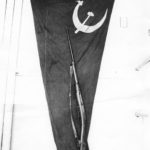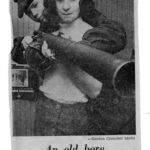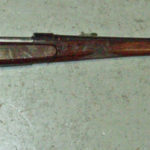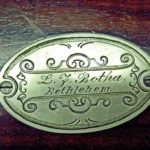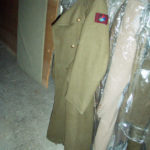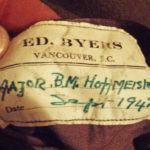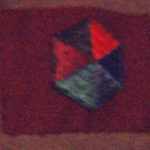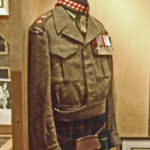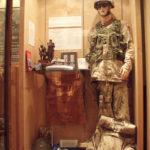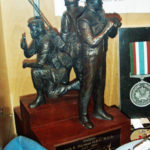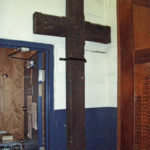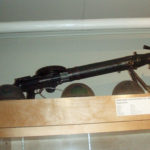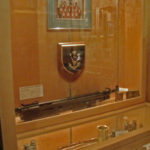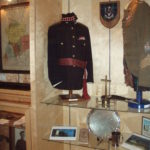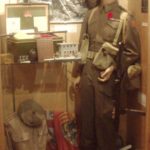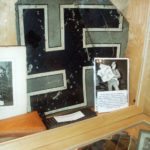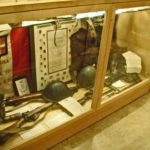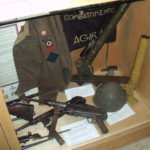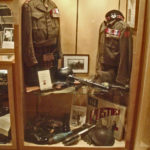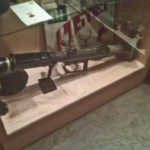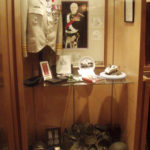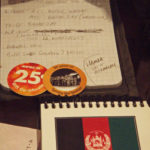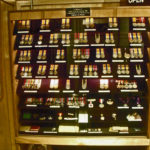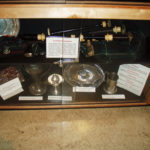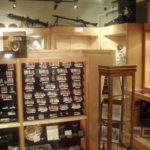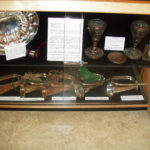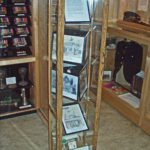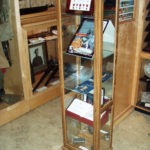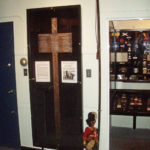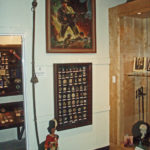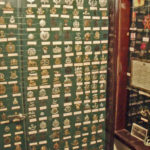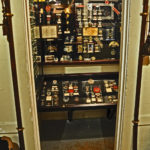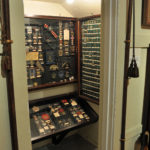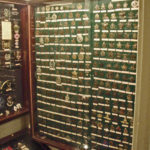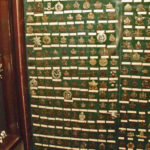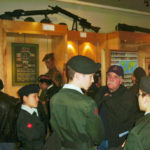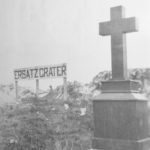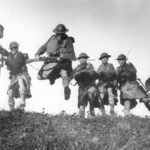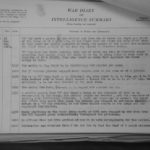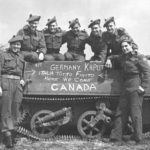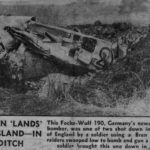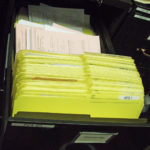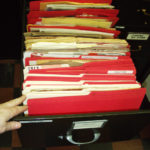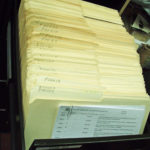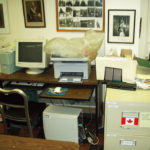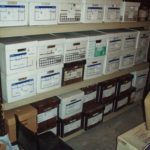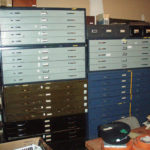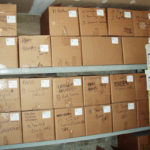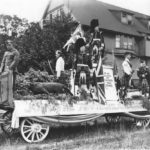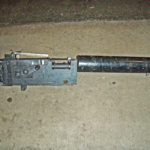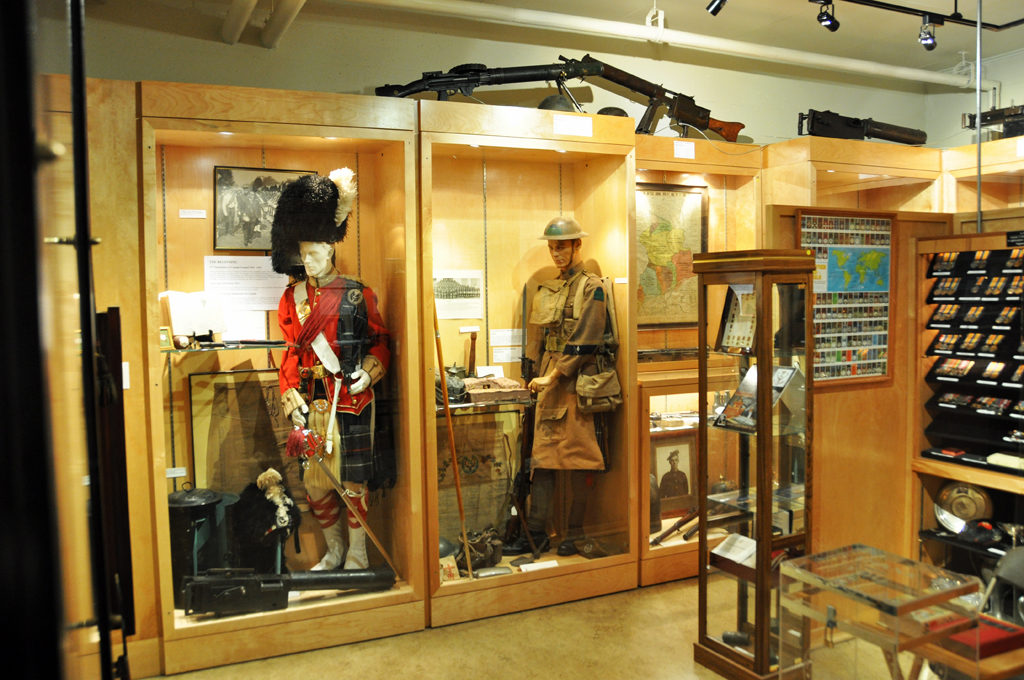
The Seaforth Highlanders of Canada were formed as the 72nd Regiment in 1910 and the Regiment has a proud history of service in peace and war. The Museum and Archives collect, preserve and exhibit the history of the Regiment. It earned official Canadian Forces military museum status in 2003. This UNOFFICIAL web page was created by the museum’s founder and long-time Curator Colin MacGregor Stevens, CD (Captain, retired).
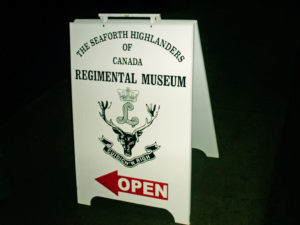
BRIEF HISTORY OF THE REGIMENT
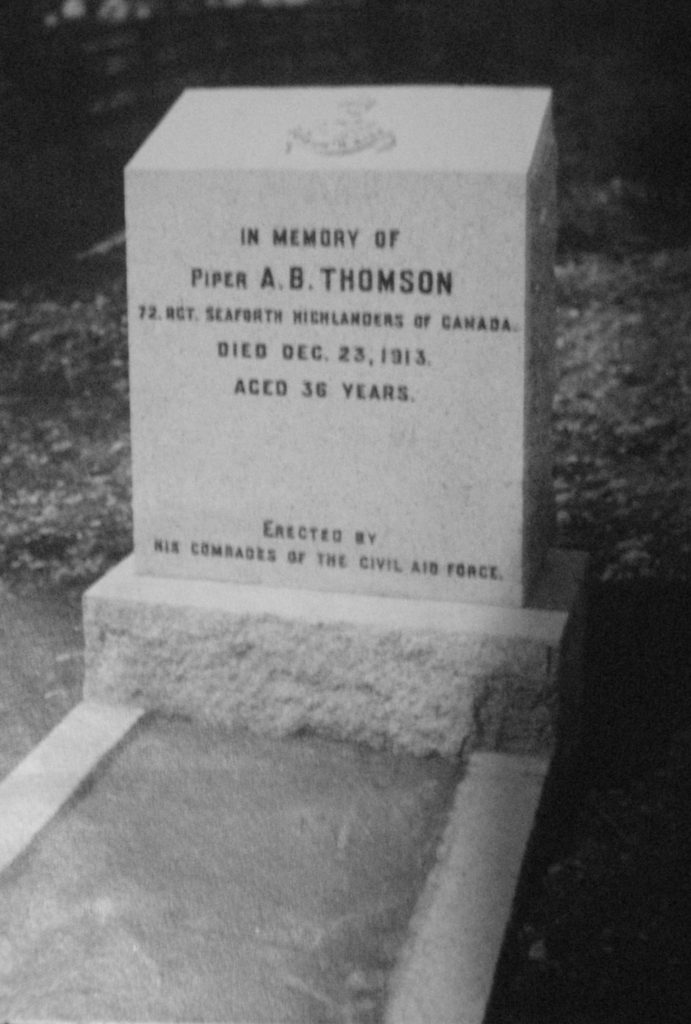
The Regiment was formed in 1910 in Vancouver, British Columbia, Canada. The first known fatal casualty was with the “Civil Aid Force” (“Aid to the Civil Power” as we later called it) during the Nanaimo Strike. The 72nd Seaforths contributed thousands of officers and men during the Great War (1914-1919, now called World War I) to the Canadian Expeditionary Force units, principally to the following CEF battalions:
-
16th Battalion (Comprised of men from 3 or 4 Regiments, including Seaforth Cadet Piper James Richardson, posthumous Victoria Cross recipient)
-
72nd Battalion (All Seaforths)
-
231st Battalion (All Seaforths, a reserve unit used for reinforcements to replace casualties)
The Seaforths built their own Armoury in 1936 and then turned it over to the Federal Government as I recall. In World War II the 1st Battalion Seaforth proceeded overseas and was in England before the end of 1939. They were part of the 1st Canadian Division and were crucial to the defence during the Battle of Britain. The 1st Division was finally committed to battle in the Invasion of Sicily in 1943. They fought their way through Sicily and Italy, and then were moved to Holland for the closing part of the war.
Seaforths were involved in fighting the great Fraser River Flood of 1948. During the Cold War, the Seaforths provided a complete Company for the Highland Battalion that was stationed in Germany. During the Cold War, Seaforths also served individually supplementing the Regular Army with NATO in Germany. Many Seaforths served on Peacekeeping Missions including UNEF 2 and in the former Yugoslavia. A number of Seaforths were in the Battle of the Medak Pocket. Later, others went to Afghanistan. Captain Trevor Greene was famously wounded there when struck in the head by an axe.
HOW THE MUSEUM WAS STARTED
About 1971-2 I found an empty cylindrical tin for 50 Players cigarettes and a Field Message Book in the drawer of the Guest Book table as one entered the Officers’ Mess. Each item had a bullet hole through it! I asked around as to their origin. The Adjutant, Captain Ron Hubner, told me that they had just been brought in. The Accession Register I created at the time recorded them thusly: “1972.22.1 and .2 Carried by Captain McIntosh. Story is that he went “over the top” in WWI with message book in one pocket of his tunic and cigarette tin in other pocket and that a German machinegun [was] shooting at him. He was between the bullets – one bullet passing through each pocket and its contents.” Captain Hubner drowned in a boating accident soon afterwards, in March 1972. I had worked a museum in the late 1960s and I realized that if I had not recorded these stories with the artifacts, then the history would have been lost with Captain Hubner’s death. I started to search the Armoury (see below) where I found many more historic items put away and forgotten. In 1972, I talked to Major John White and got him to agree to give up the room he was using for Officers’ Kit Stores, to move the kit into the Quartermaster’s Stores, and to let me use the room to start the Museum. I have had help along the way in the form of volunteers and Museum Committee. I donated many artifacts and my Platoon Sergeant, Sgt. Bob Adams, donated quite a few firearms to the collection.
MUSEUM
I founded the Seaforth Highlanders of Canada Regimental Museum in 1972. It has been moved a number of times in the interim, something which has greatly handicapped its progress, as so many tasks have had to be done multiple times. Every time the museum was moved, we lost a year of progress.
- In 1972, it was originally located in the former Officers’ Kit Stores, above the Battalion Orderly Room.
- Later we were evicted after renovating that room as it was suddenly wanted as a meeting room. The Museum was moved to occupy two of the rooms of the old Janitor’s Suite located on the floor below the Officers’ Mess.
- The Museum was moved to an old Company Orderly Room (“C” Coy?) on the parade Square and remained there until 2012. The museum office / workroom was established in the old Pam Library (i.e. room for training manuals and pamphlets) off the balcony above the gym.
- Museum collection was placed in storage with some items on display at Jericho Garrison mid-2012 to mid-2016
- Museum is now back in the armoury. The displays are now all around the parade square and in hallways. The Museum office is now under the Officers’ Mess in a space that used to be the Janitor’s Suite and later was the second location of the museum.
At the time I stepped down in 2011, the Museum Database had 7,277 items recorded. The storage was inadequate but it was basically organized with shelves all numbered and the Document and Bankers’ Boxes and Map Cabinet drawers numbered. The Museum exhibits had been inventoried, and the location inventory in the storage and archives was underway with over 2,000 artifacts checked and with locations recorded.
Here are some of the most significant artifacts in the museum collection:
- Soviet flag captured in battle by Canadians. Most Canadian do not know that Canada ever fought the Soviets, much less captured a flag. This was of national significance and not really relevant to Seaforths as only one officer served there, so it was traded to the Canadian War Museum.
- Pilot (not prototype) model of Canada’s FIRST assault rifle, the Huot Automatic Rifle Serial number 2 5,000 Huots were ordered by General Currie, but the fighting ended a month later. I found Huot S/N 1 in the gun vault of the Army Museum, Halifax Citadel, Halifax, Nova Scotia, I found Huot S/N 4 and S/N 5 in the Canadian War Museum gun vault, Huot S/N 3 has an unknown fate.
- Boer War Mauser rifle named to “L. F. BOTHA, BETHLEHEM” It is a Sporting Model 1896, known by the Boers as a Pleizer. On the side of the butt it has the extra rare large silver escutcheon engraved with the information. and these are extremely rare as they were the most prized rifles owned by Boers. This is believed to been the rifle of General Botha, one of the famous Boer Generals.
- Parlour Pipes which appear to have originated with the Lord Seaforth in the 1700s after whom the Regiment is named. The Pipe Major handed the remnants to me and I was able to do some basic cosmetic restoration and trace the family, this being in the days before the Internet! I made a replica tartan bag cover (no actual bag) after doing research. A tiny famous maker’s name was spotted by Rob MacDonald, stamped into the wood.
- Major General Hoffmeister’s great coat. “Hoffy” was a Seaforth of C. officer for years and quickly rose to command the 5th Canadian Armoured Division. He was also named to command the Canadian Army Pacific Force. This coat is named to him and has both 5CAD and CAPF patches on it.’ He is often described as the best Canadian born General that we have ever had.
- Battledress tunic of Lieut. Col. C. C. Merritt, V.C. from the time when he commanded the Seaforths 1951-1954.
- Sgt. Ernest Alvia “Smokey” Smith, V.C. uniform – Patrol Blues which I obtained for the museum directly from Smokey’s daughter in 2011. I also obtained two others of Smokey’s uniforms from his daughter Norma-Jean. I facilitated the donation of one uniform tunic to his hometown museum in New Westminster (of which I was then Manager) and a summer uniform to the museum of the Black Watch. Smokey had rejoined the Canadian Army during the Korean War and served with the Black Watch. Smokey left his Victoria Cross and medals to the Seaforth Museum and they are now safely in hand and secured.
- Smokey Smith V.C. uniform – Highland Battledress The Seaforth kilt that Smokey Smith wore when King George VI presented him with his Victoria Cross. Also his Glengarry and a post-war battledress blouse that he had added WWII Seaforth insignia to, presumably for a special function. Obtained by me from his son and daughter, and now in the Seaforth Museum.
- Uniform and kit of Captain Trevor Greene, worn/used in Afghanistan. It includes some items he was wearing or using that day when he was hit on the head with an axe by a terrorist. I collect history as it happened. Some items were missing and I obtained other items from other veterans of that war. The boots came from another Seaforth who was on the same “Roto” with then Lieutenant Greene. The drop-leg holster came from the RSM who had also served in Afghanistan. It is shown in Case 10 in the old exhibits photos.
- Miniature model of the three figures of the Peacekeeping Monument in Ottawa. The artist who created the figures for the monument also created a few of these miniature sets for his family. Due to the family who had served with the Seaforths, this one was collected by me for the museum. It is shown in Case 10 in the old exhibit photos below. It is shown sitting on a glass shelf to the viewer’s left of Captain Greene’s Arid Cadpat uniform.
OLD MUSEUM EXHIBITS 2008-2011 PERIOD – NOW DISMANTLED IN 2012 when the Seaforth Armoury was emptied for renovations and seismic upgrading. The Regiment moved back into the Armoury in September 2016.
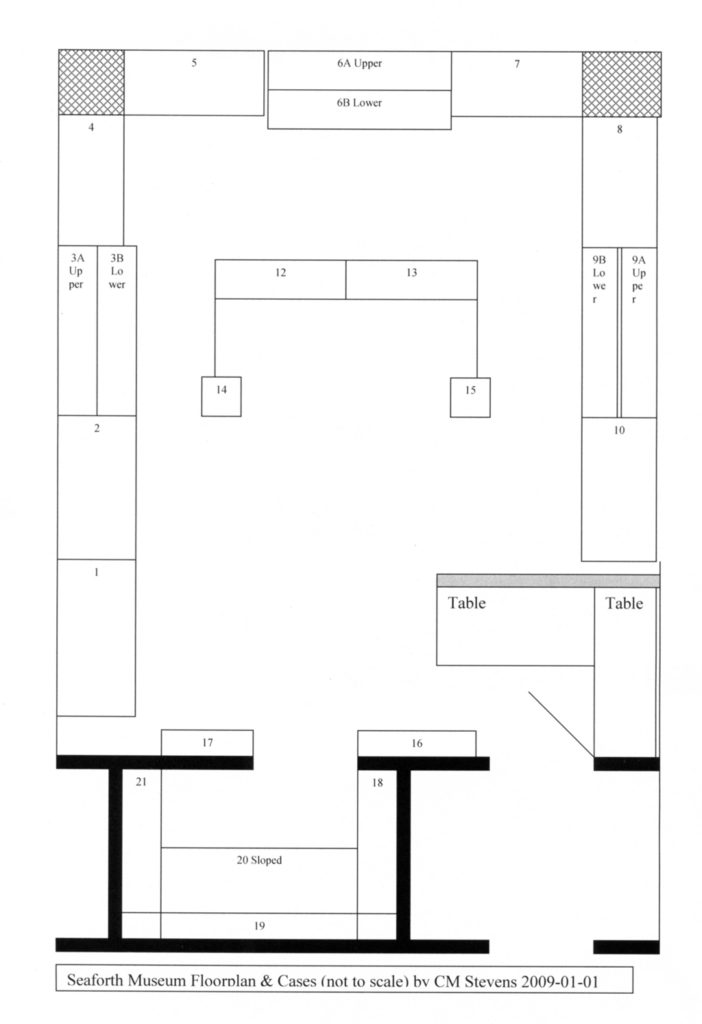
Floor plan of the old Seaforth Museum showing numbers of display cases which are keyed to the photos below. Dismantled 2012. Seaforth Museum – WWI battlefield cross at entrance. Case 2 top – Seaforth Museum – 2008 Lewis Gun (deactivated) case 3A Upper – Seaforth Museum – “Colt Potato Digger” machine gun. Purchased for and used by the 19th Battalion CEF (out of Hamiltton, ON). Case 3B Lower – German WWI body armour, MP-18 I Submachine Gun and Rifl;e Gew 98. Case 4 – Seaforth Museum – Tunics of Cadet RSM and Regimental Pipe Major. Case 4 – Seaforth Museum – Tunics of Cadet RSM and Regimental Pipe Major. Case 5 – Seaforth Museum WWII. In 2008. Case 6 A Upper – Seaforth Museum – Swawstika off the tail of a German Focke-Wulf 190 that was shot down by Seaforths over southern England. Case 6A bottom left corner. U.S. Reising Model 50 SMG in .45″. The 2nd Battalion Seaforth Highlanders of Canada were issued Reising Model 50 SMGs here in the Armoury during WWII circa 1943-1945. Case 6B Seaforth Museum in 2008. Italian items. 2″ Mortar. CANLOAN tunic of Sandy Millar who was posted to the Imperial Seaforths in WWII. Case 6B – Major Alex “Sandy” Millar’s CANLOAN BD blouse and framed CANLOAN scroll; two MP-40 SMGs, Italian helmet and two versions of the 2-INCH mortar. An Italian banner captured at AGIRA is behind them. Case 7 upper – Victoria Cross Winners – LtCol Cec Metritt VC on left (one of his part-WWII BD blouses) and on right replica of Smokey Smith VC BD blouse. Decorations and medals are replicas or generic. Case 7 bottom – Seaforth Museum – Projector Infantry Anti-Tank. Smokey Smith use one along with a Thompson SMG to win his Victoria Cross. Case 8 – Seaforth Museum Henry Bell-Irving medals and tunic etc. above. Case in 2008. Case 10 – Captain Trevor Greene’s Afghanistan worn uniform. He was hit on the head with an axe. Boots, holster, glasses and helmet are from others. July 2011 Model with three figures on shelf is an artist’s roginal limited run for family. The full sized statues are on the Peacekeeping Monument in Ottawa. It is called “Reconcilliation” by Jack Harman. Field Message Book of Captain Trevor Greene with notations made from meetings earlier in the day when he was hit on the head with an axe. Case 12 Upper – Seaforth Museum – Medlas display – left side. In 2008. Case 12 bottom – Seaforth Museum in 2008. Case 13 Upper – Seaforth Museum – Medals Case 13 Bottom – Seaforth Museum in 2008. Bugles etc. Case 14 – Seaforth Museum tall thin case on right Case 15 – Seaforth Museum tall thin case on left Case 16 – Seaforth Museum – WWI battlefield cross inside door. Case 17 – Seaforth Museum in 2008 – Smokey Smith painting, winning has VC. Case 18 right half – Seaforth Museum – British Expeditionary Forces cap badges. Case 19/20 Seaforth Museum – Seaforth insignia display case. July 2011 Cases 19 / 20 Seaforth Museum – Seaforth badges and part of the nearly complete Canadian Experditionary Force badge collection donated by WWI veteran George Clapshew. Case 20 – Seaforth Museum in 2008. Seaforth insignia etc. Case 21 – Seaforth Museum – in Canadian CEF cap badges – 2008 Case 21 left half – Canadian Expeditionary Forces cap badges. Army Cadets visiting the Museum in 2000. ARCHIVES
The Seaforth Archives were started back sometime before 1946 possibly as early as the 1910s, 1920s or 1930s. The Seaforths have an incredible archives, far surpassing those of most Militia regiments in content. They include:
- The original War Diaries from WWI, WWII and for the Seaforth Company in the Highland Battalion in Germany during the Cold War.
- Maps
- Photos (hundreds)
- Diaries
- Training Manuals
- Reference books – Regimental histories, official Canadian war histories, relevant biographies etc.
Up until 1972, the Archives were stored in a room behind the bar of the Band Room on the upper floor of the armoury.The collection had been carefully indexed and placed in neatly labelled file boxes. The reference books were on shelves.
The second volume of the Regimental History was published by Dr. Reg Roy in 1965. When he finished with the archival material, the boxes were returned to the Seaforth Armoury. They were then placed on the floor in this small storage room behind the Band Room’s bar. The reference books, many of them very old and rare, were on shelves.
The armoury’s heating system at the time was coal fired hot water. There was a radiator in the room. Sadly the armoury’s roof leaked over this room between 1965 and 1972, but no one noticed. When I found the archives in 1971-1972, the boxes of records returned by Dr. Roy were sitting in a pool of water on the floor. The water had leaked through the roof, run down the bookcase of old regimental and CEF units histories, and the radiator had “super” heated the room which had no ventilation. The vast majority of the books had been soaked, heated and most had warped pages and covers and some were bent in half as a result. Many had pages that had “glued” themselves together. Sadly, most of the books were too far gone to save. One large book that was saved was a history of the Imperial Seaforth’s ancestral 78th Regiment (as I recall) and due to its importance, I had it rebound.
The 72nd Bn CEF’s main VIMY CROSS while on location at Ersatz Crater, before being brought back to Vancouver. Seaforths practicing the bayonet charge for the Presss. Circa 1939. Lieutenant Colonel Bert Hoffmeister leads the Seaforth Highlanders of Canada to a brigade inspection by General Montgomery. Militello, Sicily, 1943. Seaforth WWII War Diary sample page Group of “D” Company, Seaforth of C. personnel posing with Universal Carrier, 7 May 1945 in Holland. Another photo taken a few minutes before had VANCOUVER chalked on the side. This was rubbed out and CANADA chalked in to accommodate Seaforths who were not from Vancouver. Focke-Wulf 190 shot down by a Seaforth using a Bren Gun. The Sawastiksa off of the tail were brought back to Canada but only one is known to survive, in the Seaforth Museum. MUSEUM OFFICE
In 1972 and for a number of years afterwards, I used a work space for the Museum and Archives up in the Fan Room (just below the attic.) Then the old Pam Library overlooking the Gym was obtained and used until 2011 August when the museum office was moved to a small room in the Association suite (old Janitor’s suite). New file cabinets were purchased and this is where donation were processed. In 2012 the museum was packed up, placed in storage, and parts were moved to Building 104 in Jericho while the armoury was renovated. In 2016 the the museum and archives were moved back into the armoury.
Seaforth Museum – Donor / Accession Files July 2011 Seaforth Museum Ephemera files July 2011 Seaforth Museum photo file July 2011. Seaforth Museum office computer desk July 2011 MUSEUM RESERVE COLLECTION (Storage up until 2011)
The Fan Room on the upper floor of the armoury, opposite the Band Room and above the Anderson Room, was used for storage and as a work area. Dust was a huge problem as was crowding. Over time metal shelves and steel map cases were installed.
Artifact storage iising Banker Boxes n the Fan Room. “Like with like” i.e. webbing together, shoes together etc. Map cabinets in museum and archives storage in the Fan Room in 2008. Obsolete scarlet uniforms and feather bonnets from QM Stores. Greatcoat of Major General Bert Hoffmesiter. CURATORS
I served with the Seaforth Highlanders of Canada as an officer from 1970 to 1976 and January 1978 to March 1978, when my job took me to Saskatchewan. In 1972 I started the Seaforth Museum and served as its Curator and Archivist for about 13 years in three “tours of duty” so to speak, when my jobs and my residence enabled me to be able to come down to the armoury. In 2011 I retired from a civilian career after 40-years of working in museums, archives, national historic sites and and a national historic park. At the same time I retired from being Curator of the Seaforth Museum and Archives.
In the early 1970s I was a student at University of British Columbia, where among other subjects I took were Museum Studies, History and Anthropology. I graduated with a Bachelor of Arts in 1975 and then worked from 1975 to 2011 at many museums, archives and historic sites and took extensive training in museum work during that time. I also instructed in museum work and did major appraisals for the Canadian War Museum, Royal Canadian Artillery Museum etc.
START DATE END DATE NAME COMMENTS 1972 1978 COLIN STEVENS Founder. Moved to a job in Saskatchewan. 1978 1979 Doug Ware No accession records. 1980 1984 NO CURATOR ? 1984 Approx. 1986 Rod Smith WWII Seaforth veteran 1986 (late) 1991 (early) COLIN STEVENS Moved back from Sask. up Fraser Valley. 1991 1997 UNKNOWN - Possibly LCol E. Rod Vance 1998 1999 ? LCol (ret) E. ROD VANCE 1999 ? 2002 Jim Bathhurst Died 2002 ? 2006 Don Parr-Pearson Died 2006. laptop with museum records was stolen. 2006 2008 February LCol E. Rod Vance Die Feb. 2008 2008 April 2011 July Approx. COLIN STEVENS Retired. THE FIRST SEARCH OF THE ARMOURY
In 1971, Soviet Premier Kosygin visited Vancouver. I was already using the Fan Room (above what was later named the Anderson Room and below the attic) to organize items that I had found. to start a museum. A B.C. Telephone technician had to string some wires through the attic for extra security lines regarding the visit I believe. As he poked his head through the attic ceiling hatch, and shone his flashlight around, two glowing cougar eyes greeted him! After that, my volunteers and I went up into the attic many times and emptied out the Maxim machine guns, 1918 Schmeisser MP-18 I SMG, Snider Enfield rifles, Mauser Gew98 rifle, Snider Cadet Carbines, framed pictures, stacks of WWII cardboard flimsy pith helmets, a large oil painting showing Smokey Smith winning the Victoria Cross etc.
One of the most interesting items I found was the following. “Pennant flag, Hammer and Sickle. Russian 1917 (Does not have the five pointed star which signified the 5 continents the Bolsheviks [Communists] planned to conquer. The star [was] added in 1918 so that dates this flag before that date. Captured by Canadians at Orosozeros in Russia, near Murmansk c. 1919 Probably the ONLY Soviet flag captured in battle by Canadians therefore nationally significant.” As a result, the museum traded to the Canadian War Museum.
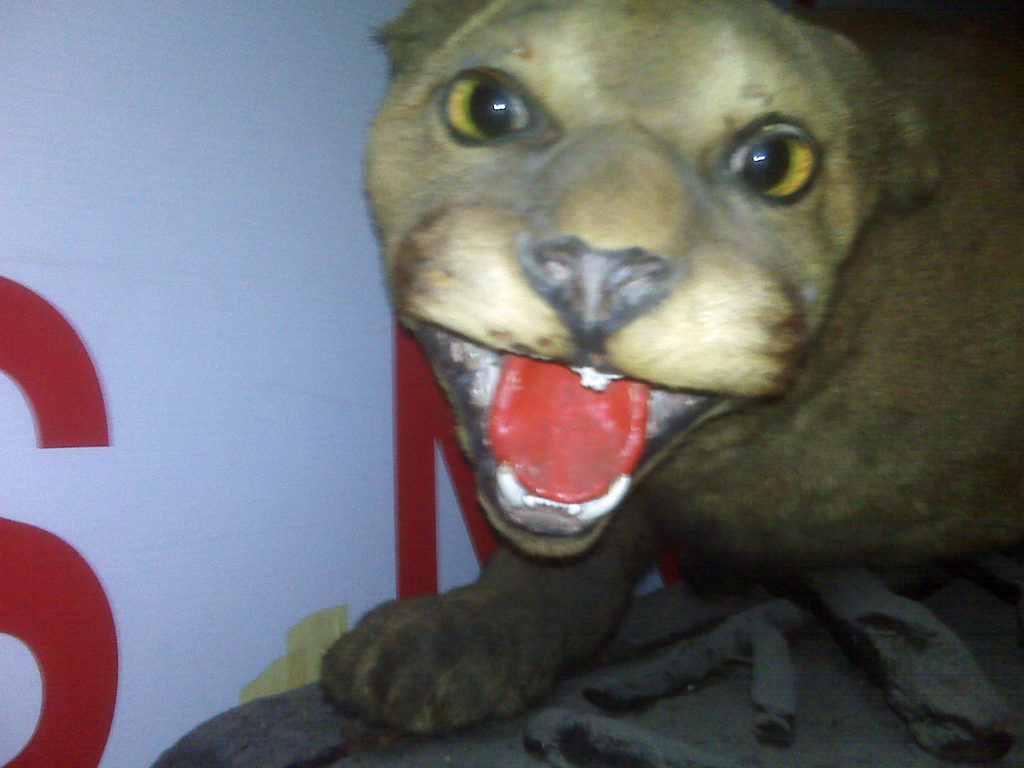
Stuffed cougar used for recruiting and in Sgts Mess found in attic The stuffed cougar on recruiting float for parade circa 1917 Wooden Maxim MG training aid by Graham & Latham Ltd of 104, Victoria St., Westminster. Circa 1912 Extremely rare and possibly unique. 1917 period German MAXIM MG 08/15 Machine Gun. One of 5 that I found in the attic of Seaforth Armoury in 1971. Shown here in the QM lock-up. WWII Seaforth sun helmets. These are actually normally rare as they are made of flimsy cardboard. Many have names inside. I found dozens of these. SETTING THE RECORD STRAIGHT
An article was published by CBC RADIO on 2016-09-24 entitled “Preserving history one shoebox at a time at the Seaforth Armoury.” Then Curator Rob MacDonald was interviewed. The information that was presented was full of errors, was extremely misleading and was extremely insulting to the many of us who had worked in the museum and archives for decades. The article implies that the museum is just being started by MacDonald and that he found that everything was in chaos which was far from being true.
- MacDonald was quoted as saying: “Before the armoury’s renovation started, Seaforth Highlanders Museum staff and volunteers scoured the building for historic material squirrelled away by soldiers. Archivists packed four truckloads of art, photos and artifacts for documentation. Many of the boxes found had never been opened before.” FACTS: The article implies that the museum is a new feature and no mention is made of its long existence. There are well established and organized files, a huge Database Accession Register of over 7,270 items that I created and to which others contributed. I also created an SOP MANUAL (Standard Operating Procedures) for the operation of the museum and archives. The Seaforth Archives were started well before 1946. The Seaforth Museum was started by me in 1972 and as of 2003 it became an official Canadian Forces Museum, thanks to the hard work of the many volunteers (including the late Lieutenant Colonel Rod Vance and my wife Jeanette) over the decades. I searched the armoury in 1971-1972 and that was when the bulk of the items were discovered, things that were hidden away in closets, back rooms, the basement and the attic. I do agree that it was a good idea to search the armoury again when the unit moved out in 2012, as a few more items would surface, but it was not, as the article implies, the first time that this had happened.
- The article said: ” The titles listed on thousands of shoe boxes, crates and even pizza boxes often don’t match what is inside.” FACTS: This is blatantly untrue. NO pizza boxes were ever used and as far as I know, no shoe boxes were used either. The vast majority of the museum and archives boxes were numbered and labelled with their contents. We used standard R-Kive Banker Boxes, and as and when the very small budget permitted, we used acid free boxes for archival material.
- The article went on to say: ” MacDonald says this tobacco tin was carried by a private during the Battle of Regina Trench. He says Private Lord was hit by two rounds from a machine gun but escaped injury thanks to his tin. Lord carried the tin until the end of the First World War as a lucky talisman and never smoked the tobacco inside.” FACTS: This so-called history is total fiction. MacDonald had obviously not consulted the Museum Accession Register or museum files, as he has confused two different artifacts from two different donors and then had added many fictional aspects to the story. I collected this bullet pierced cigarette tin and the accompanying bullet pierced Field Message Book in 1972 for the museum. From the Museum Accession Register that I created: 1972.22.2 “Tin, cigarette, 50, Player’s, with bullet hole, Captain McIntosh. Carried by Captain McIntosh. Story collected at the time (1972) that he went “over the top” in WWI with message book in one pocket of his tunic and cigarette tin in other pocket and that a German machine gun [was] shooting at them. He was between the bullets – one bullet passing through each tunic lower pocket and its contents.” That incident can be dated as he wrote around the bullet hole in the Field Message Book after the bullet struck it. Also in the collection is a Brodie helmet (WWI British “Tommy” helmet) and a shrapnel ball from Mr. Arthur Lord, accession numbers 1974.7.1A & .1B. I collected these from this WWI veteran directly. Here is the Accession Register entry I created for that. “Helmet, shrapnel, steel, “Brodie” pattern. WWI, with very rare khaki cloth cover, marked “A.L. 72 and serial#. No liner. Damaged when loaned [lent] to R West R for a home movie in 1970s. Arthur Lord letter on file: “Bullet [sic. It is actually a shrapnel ball] + My Tin Hat Name – Arthur Lord Regimental No. 129630 Batt. 72nd Seaforth — On the 31st October 1916 we were stationed in the Regina Trench on the Somme and at about 4 PM , raining and getting dark, the Germans sent over shrapnels and they hit me with this Shrapnel Bullet, but luckily for me, I was wearing my Tin Hat and the bullet hit same turning up [sic – it actually turned down] the edge, before entering the right side by my Jugular vein. Sure saved my life (he underlined the previous 4 words) I was lucky once again, feeling sick from loss of blood and making my way back on foot to the Sunken Road over no mans (sic) land, as I passed lots of Dead Soldiers. From there I was put on a 4 Mule limber to the Bapaume Road and then by ambulance to Albert for injections, and at midnight 40 miles in another ambulance to Hospital where they took out the Bullet from my neck and that evening I was on my way on a Stretcher by Hospital Train to “Boulogne” Hospital and then in about 3 weeks over the channel to “Blighty.” (signed) Arthur Lord 129630.” Note for the record. The shrapnel ball was kept with the helmet in the same cardboard storage box and the ball is in a 35mm film canister. The cloth cover was replaced by Arthur Lord after the shrapnel ball hit as is evident from the canvas not having been cut where the ball hit. The name “GIBBS” inked inside the helmet and this was damage done when some idiot lent a bunch of museum artifacts to the Royal Westminster Regiment to make a home movie. Lt. Gibbs wrote his name in felt pen inside each borrowed helmet!
- ” Newly discovered pieces help document the history of the regiment in ways military records cannot.” The example MacDonald used is a kilt apron with the signatures of soldiers in a sub-unit of the 72nd. FACTS: The fact is that most, if not all, of these items were “discovered” decades ago and recorded in the Accession Register. NOTE: Non-Public Property such as in the Messes was never under the Museum. The Sergeant’s Mess and Junior Ranks Club simply took artifacts (firearms, large cast metal eagle and swastika etc.) from the Museum collection with no apparent permission as no records were found of these transactions. Indeed the President of the Mess Committee for the Sergeant’s Mess refused to allow the Museum Curator to inventory these museum artifacts (circa 2010-2011) Yes, there is indeed value in researching the names on these kilt aprons, when time permits. There are many signed kilt aprons in the museum collection including the following kilt aprons:.
- 1973.65.7 “B” Coy, 72 Bn CEF 1916
- 1975.13.1 1st Bn. Seaforth of C 1940
- 1977.12.1A 14 Platoon Bramshot 72nd Highlanders and .1B framed letter explaining what happened to these men.
- 1977.12.2 Pipe Band 72nd Seaforth Highlanders of Canada 1914-1918
- 1998.110.1 “Scouts and Snipers”
- 1998.111.1 “D” Company 1916
- 1998.112.1 231st Bn CEF
- and there are others in the Accession Register.
AFTER I RETIRED FROM THE MUSEUM
After I stepped down as Curator in 2011, the regiment was moved out of the armoury in 2012 for several years as the building was being renovated. When they returned to the armoury, a lot of money and support was made available for the museum and archives. James Calhoun was then hired full time as Archivist. Since then that have done amazing things with the exhibits and have expanded throughout the armoury including all around the parade square. Well worth seeing when the COVID-19 restrictions lift.
After I left I obtained for the museum, one of the uniforms of Smokey Smith, Victoria Cross recipient. These were his Patrol Blues. This was acquired directly from his daughter as a donation to the museum. Later, after retiring and when it was no longer a conflict of interest, I purchased a couple of Smokey’s other uniforms from his son and daughter as well as a couple of tunics of Captain W. Robertson who was made famous by a photograph of him riding his motorcycle in Amsterdam the day the city was liberated in May 1945. He had three Dutch women on the back and the Dutch made a postage stamp featuring this image. After being asked by Mr. Calhoun, I agreed to sell one of my Smith VC uniforms (BD blouse, Glengarry and the kilt he wore the day he was presented with the VC) and the two Capt. Robertson uniforms. The Pte. E.A. “Smokey” Smith VC Seaforth battledress and the Captain W. L. Robertson battledress are now on display in the Seaforth parade square in display cabinets.
A great deal of money and effort has now been put into the Seaforth Museum. Display cases line the walls of the parade square, corridors and framed displays are in the Anderson Room.
-
-
Links to other pages of mine on museums:
-
